Roma Piotrowska: I meet artists in their studios and today I’m visiting you in your studio at home in Ramsgate. I know that you’ve recently moved from London and I would like to find out what brought you here?
Sława Harasymowicz: I’ve lived in London for over 15 years, and I found myself gradually pushed out towards the outskirts. I love the city but in the end, I felt I didn’t really live in it. It is just too expensive. I am not alone in swapping Zone 5 for Thanet, because there’s a wave of artists moving to this area.
R: What is it that attract artists here?
S: Thanet (including Ramsgate and Margate), has beautiful bone structure – the architecture and the beaches – but it is economically neglected. There is a strong, local UKIP influence. Tracey Emin escaped from Margate; she famously hated it, but now she is moving her home and studio back here. Comparatively affordable spaces, the sea, beaches, both positive energy and tensions attract artists. It’s not just a nice area to move out of London. There is art being made here that asks questions, and that’s important for me. Of course, there is also not very good art, and quite a lot of people move here just to benefit from cheap property and spend days in cafes that are too expensive for the ‘locals’. Maybe now is the threshold before the next stage where gentrification takes hold and things become settled, divided and stale. Perhaps we will all get bored with Thanet?
Sława Harasymowicz’s studio
Sława Harasymowicz’s studio
R: Could you give me some examples of artistic hubs here?
S: There is the obvious example of Turner Contemporary, a white cube institution, and numerous smaller galleries and artists-run spaces; to name just a few, there is Crate, Limbo, or Ben Volks, for example. There is also Open School East. There are pop up shows on the beach, where art sometimes disappears as the tide comes in, because the artwork is made of ephemeral materials such as sand or wood. Some of the smaller spaces are being replaced with commercial projects or shops, as buildings change owners, rents go up etc.
R: What is the nature of your work?
S: I work with images and words. I am interested in the obscure, the uncanny, the peripheral and how they reshuffle things and tensions between the personal and the public. The images that I use as sources in my works hide something. They sometimes hint at the possibility of a narrative. Images that I make in response, (I call them “picture sets”) act as mirrors, stand-ins, but they are also independent and construct their own histories. Not everything can or needs to be explained. They are another camouflage in a way. They are not empty though, and they resonate with me very strongly. I think as artists, we are shape-shifters. We deal with fabrications, so I am curious to see how emotions circulate between artworks, audience and artist to implicate everyone in unexpected ways.

Sława Harasymowicz’s studio
R: What’s your preference of medium?
S: I use different media and it all depends on the project. I can be quite obsessed with found photos, which I then draw from, turning them into quite detailed hand-drawn images, and then in turn into screen prints. The image becomes both personal and depersonalised – it is ‘mine’, but it is also universal. I work with drawings, screen-prints, collages, found footage, digital reproduction, site-responsive installations and writing. Drawing is a way I make the work mine. It does not matter whether it is a screen-print, printed drawing, or a hand-mark that is unmediated. I recently started working with animation and I will definitely carry on with it. I will also continue collaborating with musicians.
R: What is your background as an artist?
S: I wanted to study art in Poland but ended up as an English philology graduate in the late 1990s Kraków, facing a future as an English teacher. I had to get out. I went to London and I spent three years in limbo because I couldn’t start studies straight away without paying extraordinary tuition prices. I first had to ‘become settled’. I eventually got a part-time job at the BBC World Service, Polish section. My job involved recording foreign correspondents. I was one of the last people to be trained by the BBC in the analogue reel to reel tape recording and editing – cutting tape with razor blades, literally deconstructing and reconstructing sound. I really enjoyed it. Around that time I was finally able to start studying. So it was all slightly convoluted.
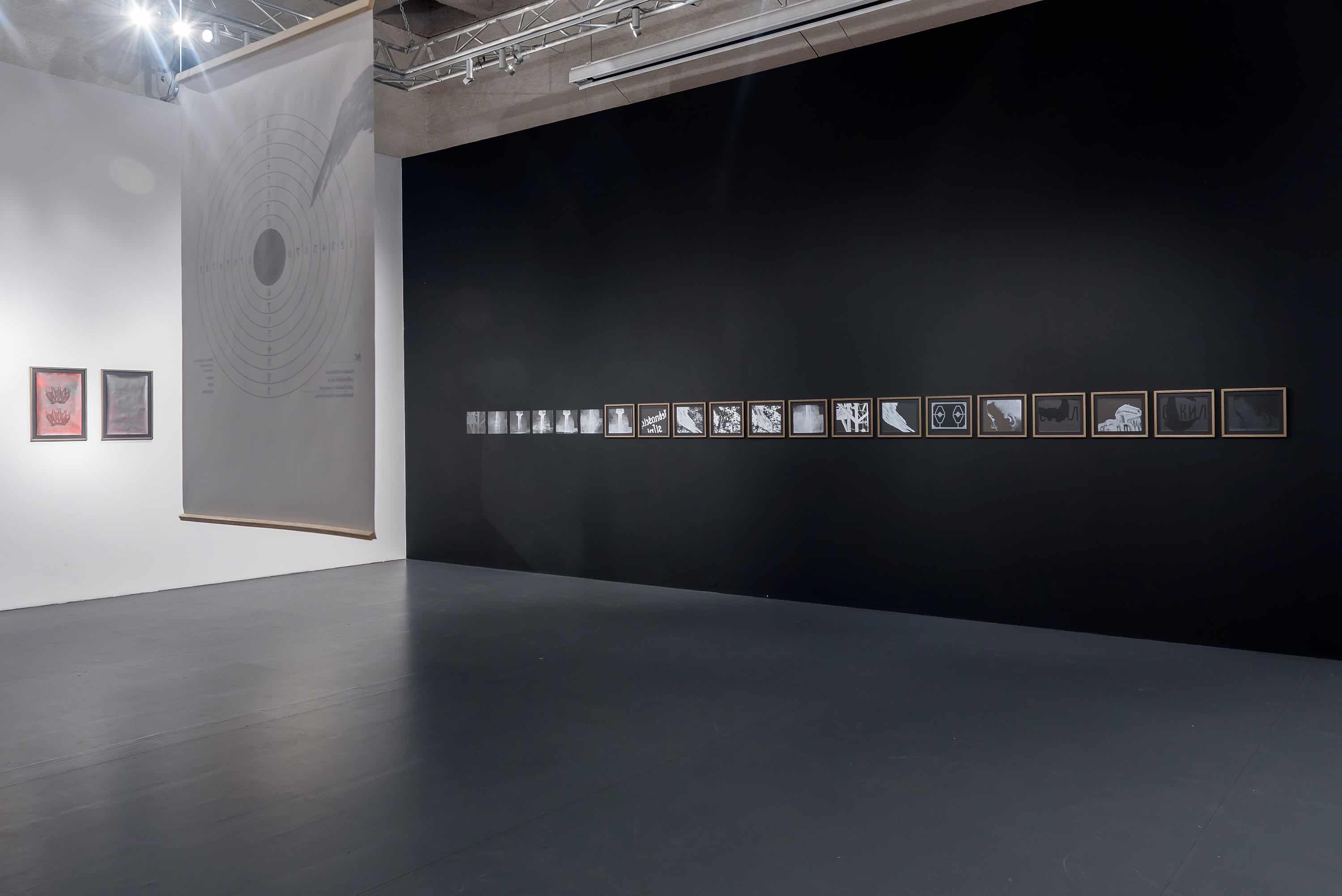
BWA Tarnów, exhibition, 2018, photo by Przemysław Sroka
R: What did you study?
S: I wasn’t sure what to choose. I wanted to study art, but also to be able to support myself and Visual Communication seemed to promise that. I went to do an MA in Communication Art and Design at the Royal College of Art. The course was really open – people made video art, sound art, illustrations, comics, paintings, performance art, there were obsessive digital designers, publishers, typographers – it was a really good mix.
R: When did you notice that you moved from printmaking to more conceptual art?
S: I would not say I worked with printmaking, I have never been interested in any technique other than screen-printing. The whole set up of printing wheels, long-winded processes, the preciousness of ‘making an art print’, puts me off. Screen-printing, on the other hand, is like photography and painting; you can actually be very fast and spontaneous with it. Things have not moved on since Warhol’s times, and screen-printing is still more associated with graphic design rather than seen as a unique form of art. My work has always been conceptual in the most basic sense. My aim initially is to communicate something, not to produce an artwork. I can feel more precious about what looks like error prints on scrap paper, or smudgy scribbles, rather than ‘developed’ works. The scraps can say much more.
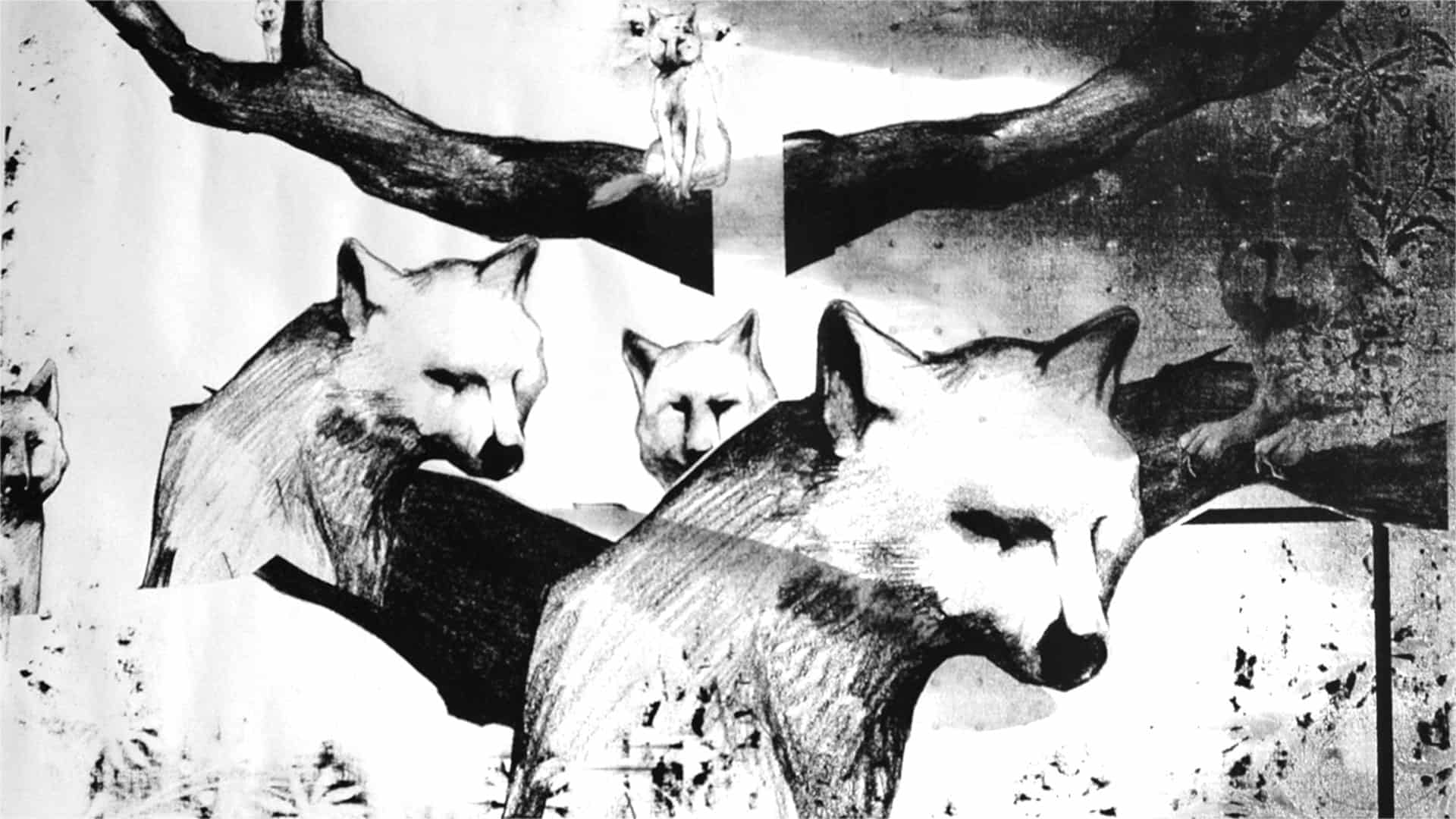
Preparatory screen print for The Wolf Man (Graphic Freud) by Richard Appignanesi
R: Before you moved away from editorial illustration, you illustrated a book by Richard Appignanesi ‘The Wolf Man’, culminating with your solo exhibition at the Freud Museum in London, and what turned out to be a transitory project for you, between illustration and conceptual art …
S: Yes, it was an important project for me. I was approached by Emma Hayley, the director of a publishing house Self Made Hero after she saw my work at the MA show at the Royal College. She wanted to develop a new series of books called Graphic Freud. The series was to translate Freud’s patients’ case studies into graphic novels. There was just Freud’s text at the start, and the book is an adaptation of Freud’s writing through my drawings, collages and Richard Appignanesi’s script.
R: Why this particular story?
S: The publisher asked me to choose any of the case studies. “Wolf Man” aka Sergei Pankejeff, was a Russian aristocrat, somehow unaffected by the revolutions and the wars of the first half of 20th century, ill, self-obsessed with his own phobias and suppressed memories from childhood. As a female artist, I wanted to avoid a more obvious choice of female hysteria, and the iconography of Wolf Man’s story is amazing – Russia, the revolution, Europe in the 30s …
Cover for The Wolf Man (Graphic Freud), Self Made Hero, 2012.
Cover for The Wolf Man (Graphic Freud) by Richard Appignanesi
R: What is Wolf Man’s story?
S: Wolf Man, as a young boy, had a nightmare – he awoke to “see” six white wolves sitting on a large tree opposite his bedroom window. The memory of that dream tormented him for the rest of his life and Freud tried to decode it, to uncover what was hidden beneath. This was also strategic on Freud’s part in a way, as Wolf Man was to be a key case to support and promote the new scientific discipline of psychoanalysis … Freud himself admitted that the case was unresolved. I thought it was interesting, unobvious, and I wanted to draw a lot of wolves as well! So I took it on and it proved to be more difficult than I thought. Emotionally quite an intense work.
R: Yeah I can see that it is a big book and looks more like a comic.
S: Yes, it’s a little bit like a comic in the sense that there are ‘strips’ as well as more open form illustrations.
R: How long did you work on this project?
S: Over two years, on and off. The problem with the graphic novel is that you need to show the narrative, one way or another I could not understand what’s the point of repeating what the script is already saying? We had long discussions … Self Made Hero was at that point a new independent publisher gaining success and this book was fairly experimental for them as well. It is an artist’s book rather than a typical comic book. It was a significant project for me, but it feels somehow unresolved, perhaps a bit like the case study itself.
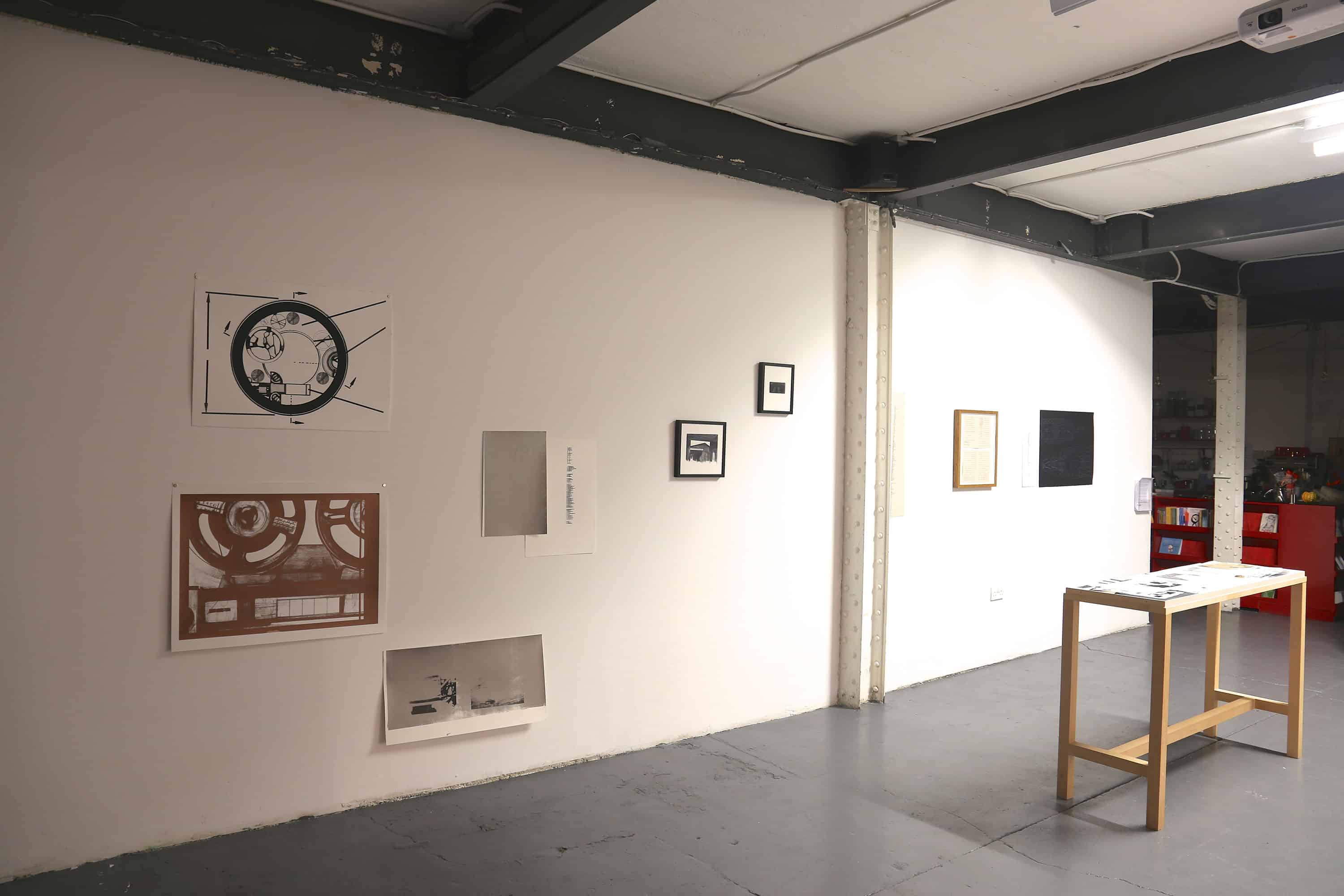
Centrala, Birmingham, exhibition, 2015-2016
R: The book gained some critical attention. You also had your collaboration with the Freud Museum. How did that collaboration start?
S: I arranged a meeting with the director Carol Seigel and she was interested both in the book and the exhibition. Almost everything in the book is hand drawn, painted separately and then put together, so in the end, I had boxes and boxes of drawings and paintings. I wanted to respond to Wolf Man’s story differently, away from the pages of the book. I invited Sarah Jury to help me curate. We had a short deadline because my proposal was quite last minute, and there was just over one month to make the exhibition. I exhibited in Freud’s last bedroom, the place where he must have had dreams. I brought all the material from the book – which was essentially scraps and sheets of paper, hundreds of them. The exhibition was not a representation of the book as an installation, but a new presentation; a site-responsive excavation of Wolf Man’s story; an exploration of memory and dreams – mine, Freud’s, Wolf Man’s, the audience’s … and a look at psychoanalysis as an archaeological process.
R: So how did your artistic development go from then on?
S: For a while, I was obsessing about a few holiday snapshots of my grandparents skiing in the 1930s. I saw those images for the first time in a public library around 2008 and I re-photographed them through the glass. I had not known what my paternal grandfather looked like at all till then. He died a month after I was born, and there were no photographs. I had also not seen a photo of my grandmother as a young woman before. They appear glamorous and happy – just like actors in a film. Those small pictures were taken in bright sunshine, and they show snow, darkened silhouettes and dark, blurry faces. I wanted to connect, somehow, to that moment in the sun and snow. I tried to zoom on those faces, to see their features, but they remained obscure. I mixed in other references, for example, archival LAPD crime scenes, or military photos and made a series of photo-drawings and screen prints on raw linen canvas, displayed like paintings on stretchers, or directly nailed onto the walls. I exhibited the work at a disused Victorian police station in London. Since then I started making work with archives – as a depository, source and as a concept, and family history.
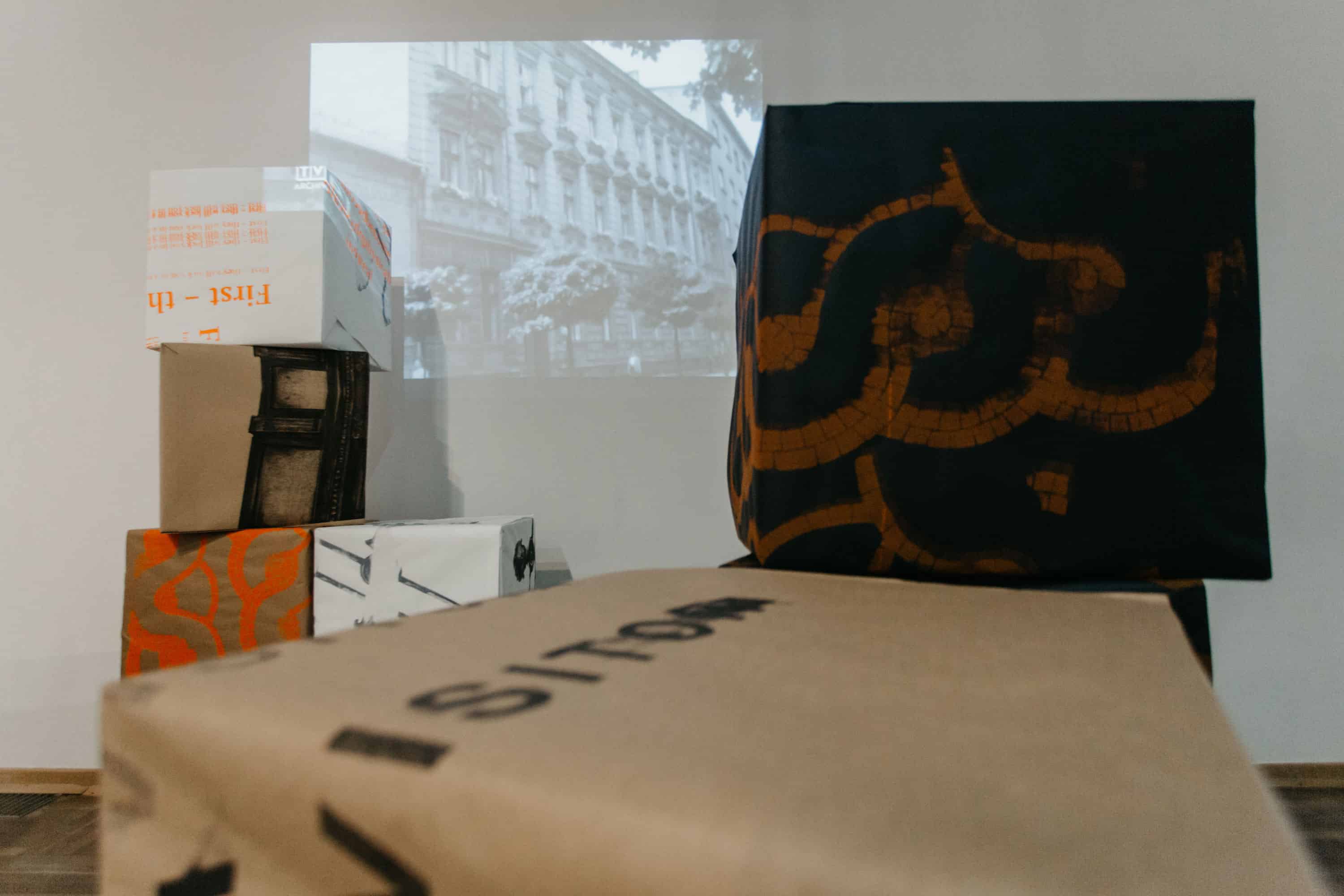
‘The Trouble with Value’, Bunkier Sztuki, 2017-2018, photo by Studio FilmLOVE
R: What is your PhD about?
S: It is a practice-based research in Fine Art at the UAL, and as part of it I construct responses to collective history, personal memory, trauma and amnesia. I use my own family history as a point of departure. I don’t really like history that much, it annoys me. My projects are not about trying to explain history, but about showing the history as alien, and constructing alternative narratives that sort of try to stand up to history and trauma that transmits itself across generations. I track fragmented familial biographies which happen to have been totally entangled with catastrophic historical events; narratives that have been forgotten and should not be. This is not something that I could have planned for. It is the material I have to deal with.
R: How has this family investigation carried out?
S: I research online and physical archives. I have found information about my own family history in public archives. I found my grandfather’s CV, his handwritten statements, found out about the languages he spoke in the Central Military Archive in Warsaw. I tracked other information by talking to a curator in the Kraków Pomorska Museum. I found more documents in the public collections than in my personal, family “archive”.
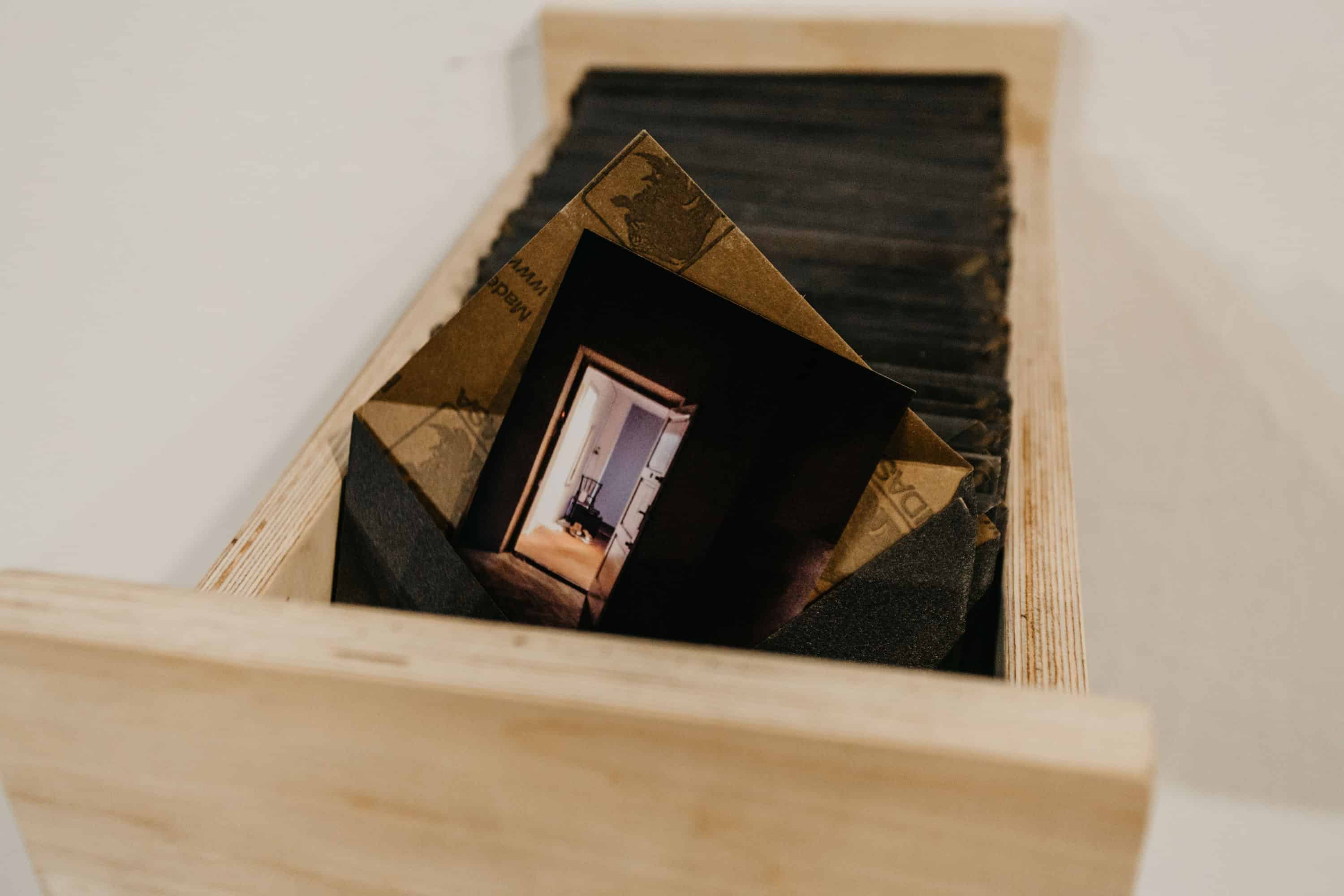
‘The Trouble with Value’, Bunkier Sztuki, 2017-2018, photo by Studio FilmLOVE
R: Have you used those discoveries in your projects?
S: I have recently finished a couple of projects in Poland. One of them was a solo show at BWA in Tarnów, and a project for Bunkier Sztuki in Kraków, where I made work exploring my early childhood home. Right now it is an unusually dilapidated building in the middle of central Kraków, a ruin that is still alive, just about. The building used to be a temporary shelter for the displaced in the late 1940s (as Polish borders changed after the Second World War, hundreds of thousands of people, including my own family, were suddenly displaced). Between February 1947 and February 1948, 700 people stayed there. Kraków and other towns in Poland were overcrowded, the displaced slept rough. The project at Bunkier explored the notion of transience. I am making more work about that building in Kraków. I am interested in how this building can contain memory and at the same time erase it. I am a ghost in my old home, tracking shadows, yet the building stays solid, in its place. The texture of the place is a hauntological cliche, only it is true, it is what it is: peeling paint, cracked walls, broken floor mosaic, worn out steps of the staircase, empty, dark corridors. And then suddenly you can spot, an unbelievable detail: a small starfish made of fake Murano glass, high above the front doors. I think it has always been there, it looks familiar. Today, the tenement is semi-derelict, it houses a run down holiday apartment, an office, one resident, and an Escape Room. The last one is in our old apartment. This situation is not going to last – the developers are hovering. So, my old home is on the threshold between the past and the future. There is no present, and what is the future?
R: You discovered this incredible history connected to your childhood home. Were you not aware of that history when you were growing up?
S: No, I didn’t know about the history of the building till very recently. We only lived there until I was eight. My parents never talked about it. When we were there, it was our home.

Centrala, Birmingham, exhibition, 2015-2016
R: Could you tell me about your project you showed in Birmingham in 2016?
S: I wanted to find out more about my maternal grandfather’s brother. All I knew was from my mother: “Marian died on the ship in Germany. The ship was bombed with all the concentration camp prisoners locked inside”. It was not enough for me. The official story says that over 7000 mostly Polish and Russian prisoners, ‘evacuated’ by Nazis from Neuengamme concentration camp near Hamburg, were put in the holds of three ships, and died as the ships were bombed by the RAF, by mistake, five days before the war was officially over. My grandfather’s brother, Marian, who had dreamed of becoming a poet, was on one of the ships. I started wondering – what sort of mistake results in killing thousands of people? There was a year-long investigation by a British officer, immediately after the war and the conclusion was that the RAF intelligence did not pass information about the prisoners to the pilots. It was carnage. Someone somewhere decided not to change the order. The whole event was hushed up and information censored for decades.
R: So, what was your artistic response to this shocking story?
S: I needed to find a way into this history, as an art project. It was difficult. It was not about ‘playing with archive’. I told the story of the impossibility of understanding. I worked with found images to make a fictitious archival footage of the event, a sort of parallel, make-believe footage. It was not about searching for the culprit. It became three exhibitions rather than one, but it could be more,- it sort of accumulates. In Birmingham, at Centrala, the work was focusing on selected fragments of the story, significant details – such as the list of Polish prisoners and their professions – which I converted to prints and sound,- but I was not visually representing facts.
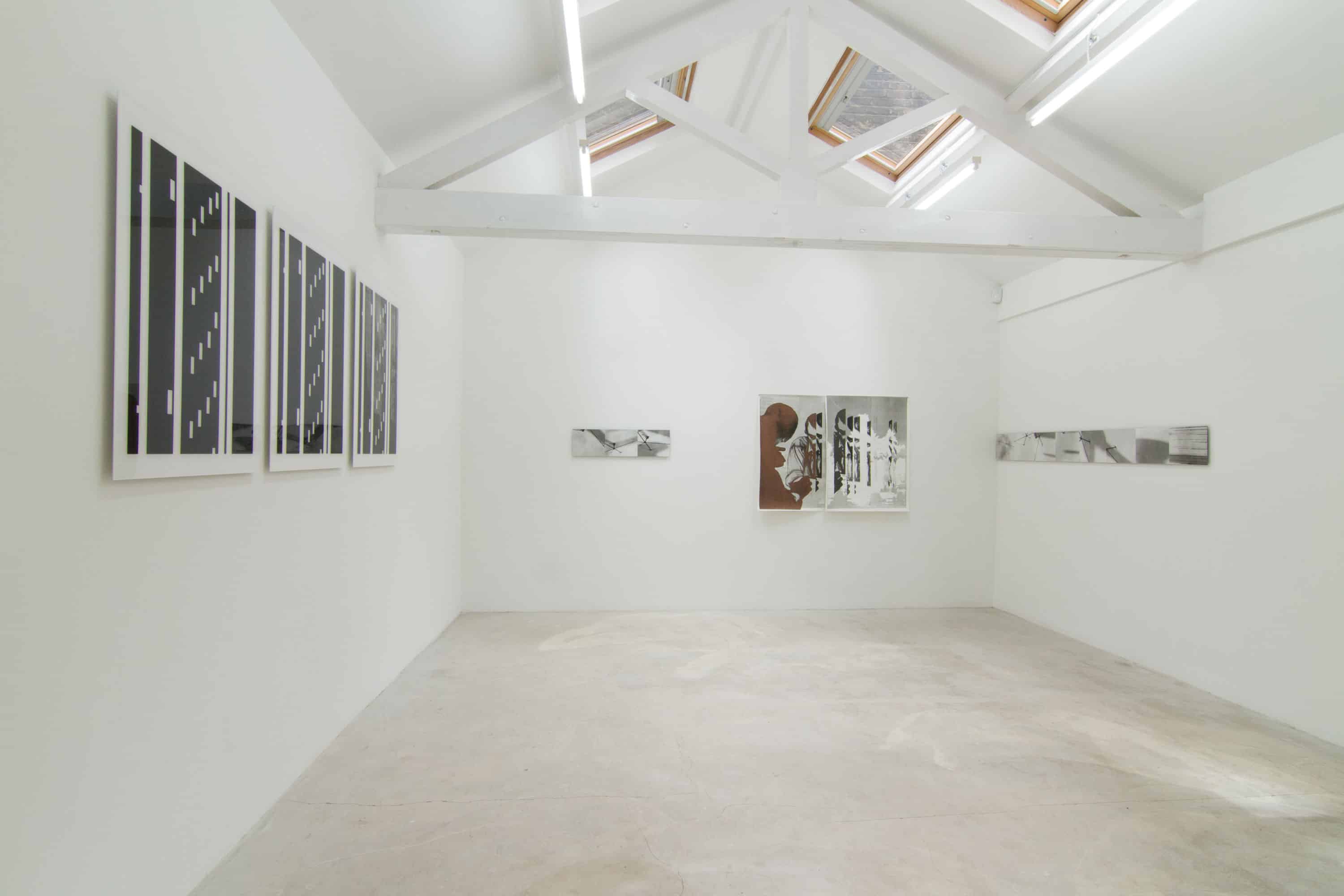
Radio On, narrative projects, London 2016
R: And this project brought you back to the Freud Museum.
S: I had a series of incredibly helpful emails with the concentration camp archivist of Neuengamme, Alyn Bessman. I received information related to prisoners’ secret cultural activities in the concentration camp, such as literature recitations, scientific lectures, or a performative ‘radio show’, called Radio Warsaw, where my great-uncle’s section was Poetry. It was a clandestine collective performance in the barracks, activity striving to retain the sense of identity, of being human. Radio Warsaw was ‘broadcast’ once a week for almost a year. I wrote a script based on data from Neuengamme archives. The Freud Museum hosted my performance by a group of actors. We recorded it in Freud’s Study – right next to his famous psychoanalytic couch and desk. Psychoanalysis is about working through repressed memories and emotions, dealing with trauma through talking, and we were working through the memory of war trauma, through repetition: a performance of the original performance. I collaborated with curator Dominik Czechowski.
R: Polish art deals with trauma a lot. How do you find yourself in the situation of being a Polish artist here in the UK still thinking about this Polish history?
S: It’s not a deliberate choice of subject but a personal necessity related to stories of a small group of people, my family, that I had not known or knew too little about. I focused on my own family history, and suddenly I realised it is part of something else. The collective history interferes, and then you try to deal with it. But I also, of course, make work that has nothing to do with Polish history … Recently I took part in a programme of events associated with Turner Contemporary and their major project around T.S. Eliot’s ‘The Waste Land’. I made a site-specific installation focusing on Vivienne Eliot, T.S. Eliot’s first wife and ultimately an inconvenient, marginalised figure. While Eliot’s own depression was treated sympathetically, her anxiety led to her being locked away in an asylum ‘for her own safety’, where she died. I thought that Margate Museum – which used to be a police station and includes prison cells – was a perfect site. I used one of the cells and made paper pillows printed with minimal words, taken from the parts of the poem attributed to Vivienne. The pillows were placed on the wooden bed, and a line of kitchen foil screen-printed with a drawing of Vivienne’s face operated as a sort of distorted mirror at the visitors’ eye-line. I made a video montage showing catastrophic drought and fire scenes from Kent from 1920s and 1930s. I positioned the monitor facing inwards, so in order to watch the video, you had to become a prisoner. I also invited artists (Alicja Rogalska, Justyna Scheuring, Joanna Rajkowska, Cecilia Bonilla and Eva Stenram) to make a series of interventions in the main courtroom.
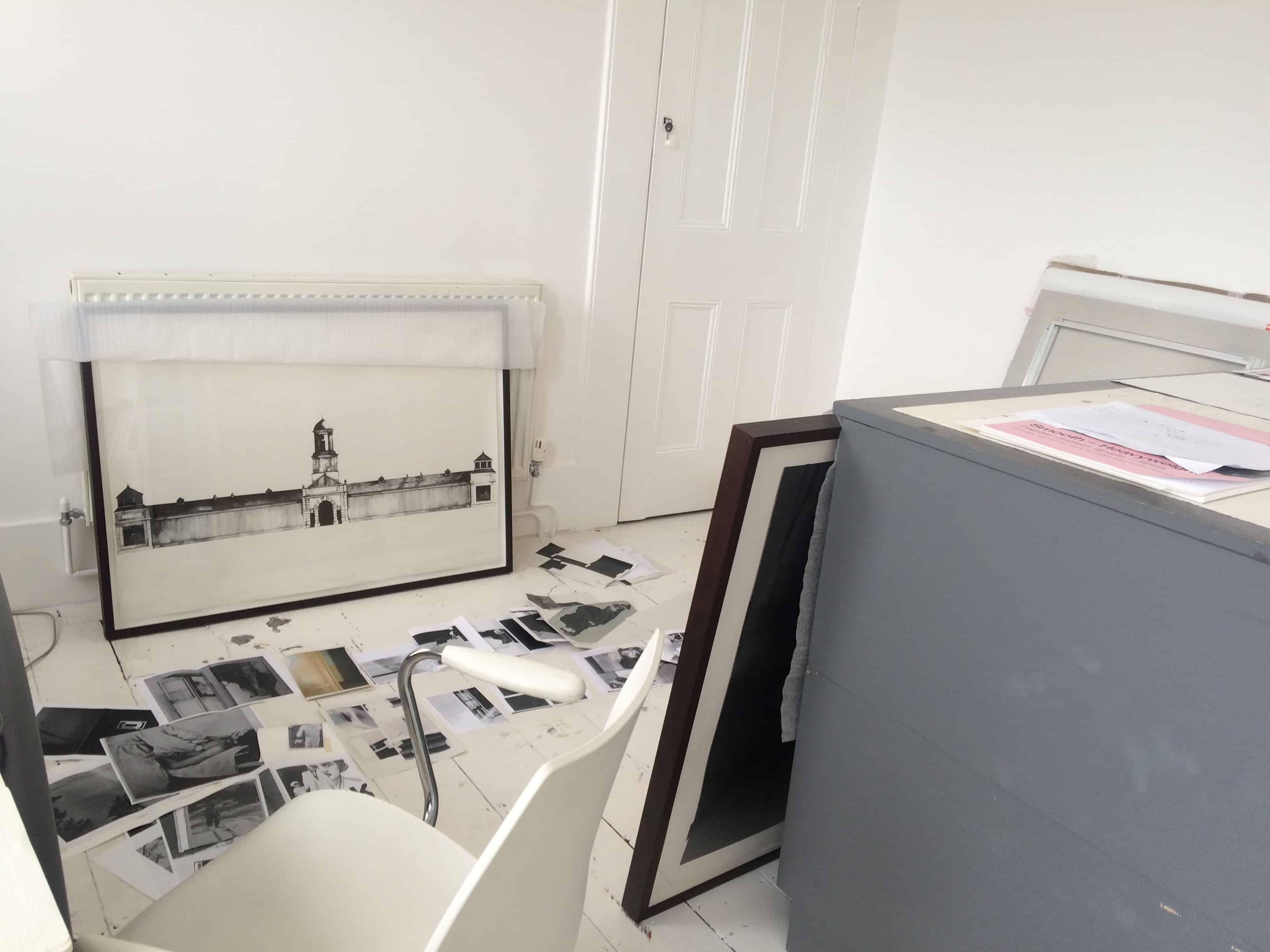
Sława Harasymowicz’s studio
R: What are you working on at the moment?
S: I am working on the Escape Room at my childhood home. This work and a new artist’s book will be debuted at l’etrangere gallery in London next year. I am also preparing a publication around the ships catastrophe. There is a new project looking at erasure, and camouflage with Arts Territory in the pipeline.
R: You’ve been here in the UK for almost 20 years now, but you still have connections with Poland and exhibit there quite a lot. How has that happened?
S: All this grew out of work I developed in the UK. I had no artistic connections in Poland before moving to England.
R: How about connections with the Polish art scene here in the UK. Do you keep in touch with other artists? Could you share any thoughts about the Polish art scene?
S: I keep in touch with a group of artists and curators who quite possibly arrived here around 2004. I’ve never asked them actually about their dates of arrival into the UK … It is maybe a bit more tricky for me now, being away from London, but we stay in touch. This ‘Polish art scene’ in the UK is really diverse and not clearly defined. Really good projects just stand out. And not only the most recent ones. I remember Enthusiasts by Marysia Lewandowska with Neil Cummings at Whitechapel Gallery. I saw it when I was still at the RCA. It made me feel more connected, more at home in London, and somehow more at ease with the idea of going back an art school as a mature student.

BWA Tarnów, 2018, photo by Przemysław Sroka
R: We are in your studio now. Is it where you spend most of your time when working?
S: I work or think about my work all the time – whether I am in this room or not. This room here is part of the domestic set-up and I try to keep things separate, but it is not always easy. Anyway, here I make and keep my drawings and prints – with lots more stashed in boxes elsewhere – I also do research, make digital work and generally try to put some order to this chaos. I go to London or Margate studios to make screen-prints. To clear my head and to think I need to be outside a lot and be on the move. I often go to the seafront first thing in the morning. It is 10 minutes away from this room. The beach is often empty and the sea really is different every day.











